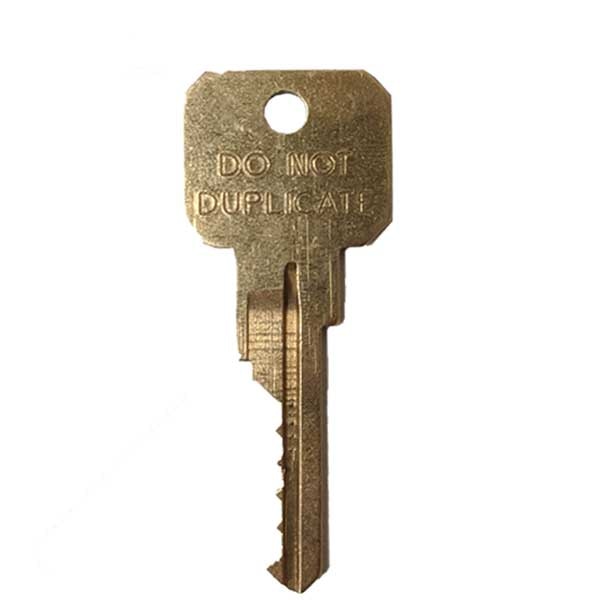Description
Product Type: BUMP Key
Keyway: KW1
Manufacturer: JMA
What Are Bump Keys?
Bump keys are specially cut keys that can bypass the security mechanisms built into traditional pin and tumbler locks. Bump keys are also referred to as “999 keys” because all of their ridges are cut to the maximum depth (999) in a key-making machine. These keys are relatively easy to produce (it typically takes less than five minutes to cut a bump key), and not very difficult to acquire.
How Does a Bump Key Work?
Bump keys exploit a vulnerability in pin and tumbler locks related to the pin stacks, which are the spring-loaded stacks of pins that keep the cylinder of the lock from being turned without the use of a proper key. In a typical pin and tumbler lock, there are two sets of pins, known as the driver pins and the key pins. Each pin stack within the lock is occupied by one driver pin and one key pin, both of which are pressed tightly against each other by way of a small spring attached to the driver pin. The point at which each set of pins meet is different for each pin stack, which is why a typical key is cut at different depths to accommodate this intentional misalignment. Once the correct key is inserted, it causes all of the meeting points of each pin stack to come into alignment, creating what is known as a “shear line.” Once the shear line has been formed, the lock can freely rotate within the cylinder, allowing the door to be opened.
A bump key is cut in such a way that it will not properly align with the pins, but instead will simply disrupt the pins when the bump key is struck by an object such as a screwdriver or small hammer. Using a principle of physics similar to what makes “Newton’s cradle” work, the energy produced from striking the bump key is transferred to the pins inside the lock, causing them to jump and create a temporary shear line, allowing just enough time for the intruder to quickly turn the lock and open the door. When executed correctly, lock bumping is effective in nearly 90 percent of all cylinder-type locks produced today. Perhaps one of the most disconcerting aspects of lock bumping is that it can often go undetected, which means that your home can be broken into without any signs of forced entry.





